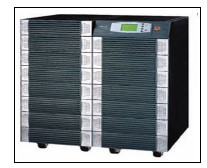
India is the third largest economic power in Asia with over 8 per cent GDP growth
that is predicted to reach 9 per cent or more. This can happen with proper power
solutions alone, as the country is facing a power shortage of over 200,000 mw
per year. The power shortage and interrupted power supply scenario has resulted in
the need for power backup and energy storage devices attracting organizations,
households and industries to depend on UPS and inverters/generators during the
"dark hours" of power cuts or power failures.
However, storing energy efficiently and effectively in itself remains the biggest
challenge of the day as grid parity is never achieved. Grid parity is the point at which
alternative means of generating electricity is of minimal value. That makes these
power sources and power generated from power backup appliances more valuable,
bringing in the importance of efficient power transmission. Therefore it can be said
that power efficiency is nothing but the power saved itself.
Another loophole is the loss of huge amount of energy in form of heat energy
(15-60 per cent) during power transmission. Heat generated due to the
resistance offered by the conductors is often
the most neglected part. It is in this regard the
cables, wires and conductors used in
appliances play an important role not only in
terms of safety but also in conservation and
efficient supply of energy. Hence it becomes
imperative for uninterrupted power supply
(UPS) systems, inverters and other energy
storage devices to have wires or cables of
highest efficiency.
Efficiency in terms of wires is nothing but superior conductivity and lower
resistance which in turn make such power backup machines efficient with longer
working hours. Another aspect is when energy is transferred from a backup source
to equipment; the cables connecting them need to be of superior quality to ensure
efficiency here as well.
Giving an example of the Indian scenario, households, offices and industries;
wiring here is made of copper wires even the backup power instruments are
connected to the appliances by copper wiring. Here it would be important to
highlight that the conductivity of the wires and cables depends on its purity.
Therefore while making a choice for manufacturing storage devices, copper wires of
purity of the 99.99-per cent order, which have the ability to reduce power loss by 15-
20 per cent compared to the normal copper wires should be preferred. Most
important factors contributing to the resistance and thus loss by heat are the
impurities present in the wires and connectors. Copper wires free of oxygen, less
than 10 ppm (parts per million), offer negligible oxidization resulting in lower
resistance, better conductivity and thus lower energy loss, hence this parameter also
need to be considered.

Power losses are also irreversible making the end users or customers aware of
these aspects, while creating a necessity for environment friendly products. RoHS
(Restriction of Hazardous Substances)-compliant cables are more environment
friendly with lesser lead content and cables like LAPP UNIPLUS, ÖLFLEX®,
UNITRONIC® range of cables are RoHS compliant and are made using 99.99 per
cent pure oxygen Free copper conductors. Bureau of Energy Efficiency of India has
made it mandatory to display the star labels on Air conditioners, refrigerators etc so
that the customers get to understand how much electricity they would end up saving.
Today more focus is on the power management than power generation. Power
should be managed! Power management is present both in micro and macro levels. In its micro sense is a feature of some electrical appliances,
especially copiers, computers and computer peripherals
such as monitors and printers that turns off the power or
switches the system to a low-power state when inactive. In
computing this process is known as PC power management
and is built around a standard called ACPI (Advanced
Configuration and Power Interface). In the macro level it
would be managing power amongst industries,
manufacturing and households according to the use and
requirement. For example households' peak consumption
would be in the evenings compared to late nights and
afternoons. This power management at both micro and
macro level requires efficient cables and connectors to
prevent loss during transmission.
From consumer point of view, to address the issue of
rising electricity bills it would be advisable to switch to
electrical appliances with BEE (Bureau of Energy
Efficiency) label. These labels indicate the energy
efficiency levels through the number of stars highlighted
in color on the label. The BEE star labels include a star
rating system that ranges from one star (least energy
efficient, thus least
money saved) to five
stars (most energy
efficient, thus most
money saved)
On the industrial
side, with the boom in
automobile industry,
nonrenewable energy
sources are fast paving
way for greener
automobiles. Hybrid
cars are becoming the
talk of these tough times. Plug-in hybrid cars use
connectors to connect to the power source and store them.
Effective charging is predominantly dependent on the
connectors used. Power backup with efficient and lesser
charge time in these automobiles will attract more
customers. In India we have cars that need to be charged
over eight hours. Using effective chargers and connectors
we can reduce the charging time creating more customers
friendly and effective electric/alternate powered cars.
Power storage and energy backup solutions varying from
diesel generators, solar lights and UPS are becoming
common in Indian households in the fight against the
common phenomena of power cuts. However with the
increase in urbanization and development power demands
have reached sky limits. Before we even think about
alternate power its necessary that we conserve the power
and use it efficiently. It is also necessary to understand that
energy efficiency is energy conserved. Citizens, both
manufactures and end users, need to be more aware and
responsible towards efficient usage of both power backup
and power devices.
( K.R. Chandrasekar is
Vice President-Sales, Lapp India Pvt Ltd)